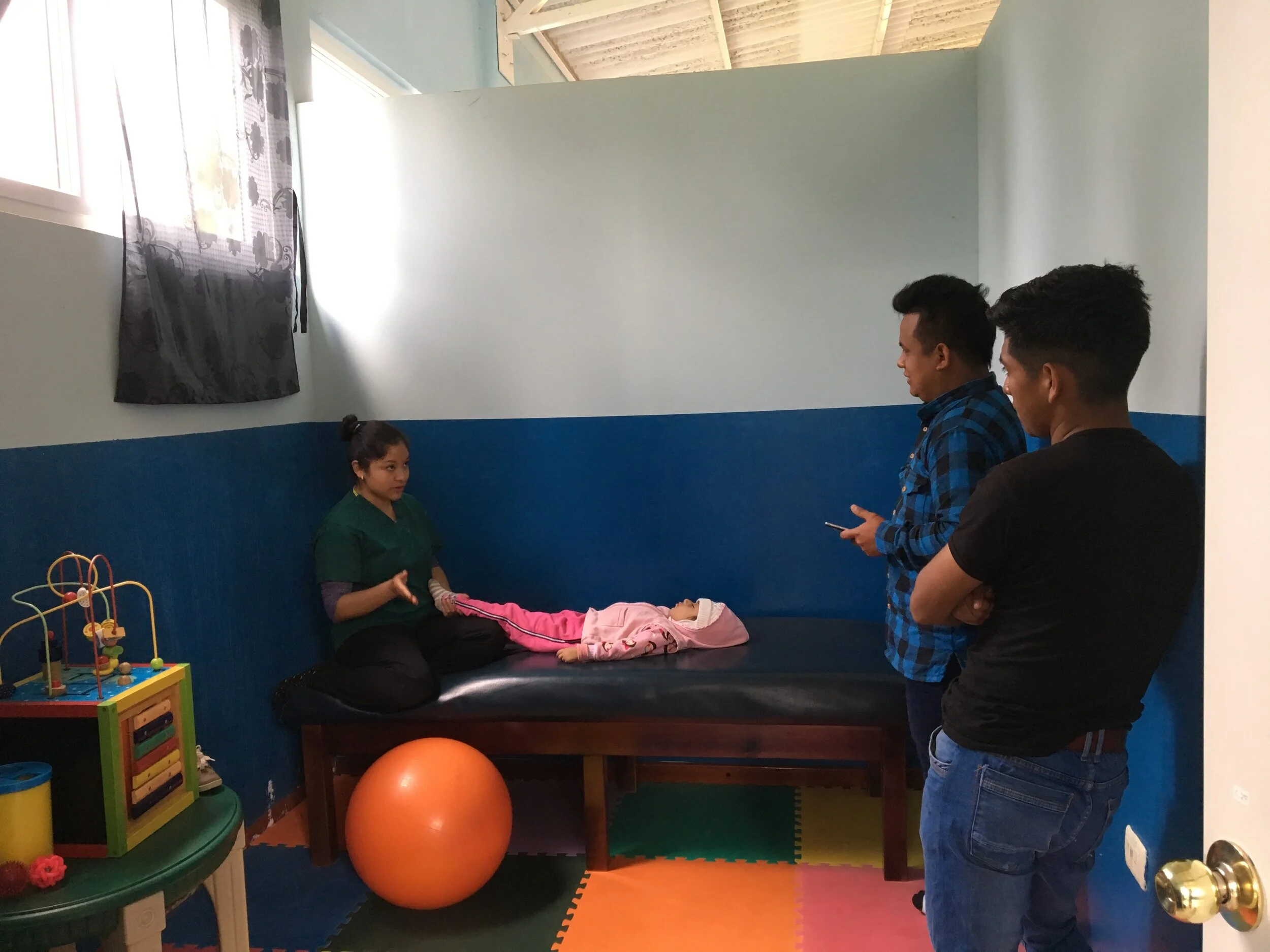Update: Last year the World Health Organization (WHO) released their latest research on rehabilitation. According to their findings, one in three people will need some type of rehabilitation services in their lifetime. The question is, can they get it?
You’ve waited in anticipation for the birth of your child, but when the time comes something isn’t right. Your new son isn’t like your other children: he isn’t moving as they did, he doesn’t learn to walk, and he doesn’t speak. As a mother, your heart longs to help, but you don’t know what to do. You look to your family and community for support, but they blame you.
This was the case with Maria and her son Raul, who live in a remote mountain village in Guatemala.
Being a fighter, Maria broke past barriers and found help in a community 12 hours away. It wasn’t easy. She left her cinderblock house with a dirt floor at 1:00 am carrying 40-pound Raul on her back, often in the pouring rain on narrow mountain passes. After walking for hours to reach the bus,the driver might not stop for her because he needed to make more money and stopping for Maria and Raul, with his disability, meant too much time for them to get on the bus, time in which another bus might pass them and pick up the waiting passengers further down the road.
In time, she and Raul would arrive at their destination. The reward for Maria’s journey: a one-hour therapy session for Raul every other month, only to turn around and return home. This time, the trip ended with the 4+ hour walk up and down the narrow mountain paths with her son on her back. Meanwhile, she had lost two days of work and had 10 more children waiting at home to be fed.
Maria, and her son Raul, are not alone:
According to the World Health Organization (WHO), over 1 billion people or 15% of the world’s population are affected by disability.
Disability rates are 10x higher in developing nations as compared to developed nations.
Of the 10% of children with disabilities, 80% of them live in developing nations.
People with disabilities are the most marginalized in the world, with decreased health outcomes, decreased educational achievement, decreased economic participation, and increased poverty as compared to those without disability.
Rehabilitation services in developing nations are “generally insufficient and fragmented.” According to the WHO in low- and middle-income countries there is less than 10 rehabilitation professionals per 1 million people.
Data from South African countries shows that only 26-55% of people with disabilities receive the rehabilitation services they need and only 17-37% receive the assistive devices they need, such as walker, wheelchair, hearing aides, etc.
The Pan-American Health Organization reports that only 3% of people with disabilities have access to rehabilitation services in the Americas.
In Guatemala, more than 70% of doctors live and work in and around Guatemala City. The same tends to be true for physical therapists. In talking to physical therapists and physical therapy educators in Guatemala, I found they agree therapists will not go work in the rural, indigenous areas where there is great need, preferring the comforts of urban life. The continued discrimination of indigenous people by the Ladino, Spanish population may play into that as well.
In the past, rehabilitation services were not seen as a priority, but more a luxury. However, with WHO Rehabilitation 2030’s call for action, there is an increased awareness of the need for quality rehabilitation services around the world.
Rehabilitation services are a vital component of global healthcare and a valuable tool in missions.
Resources:
Pan American Health Organization (1991). Clinical Advances in Physical Medicine and Rehabilitation. Retrieved from http://publications.paho.org/product.php?productid=278
World Health Organization (2018). Health leaders from the Americas pledge to improve access to health services for people with disabilities. Retrieved from https://www.paho.org/hq/index.php?option=com_content&view=article&id=10056:2014-health-leaders-americas-pledge-access-disabilities&Itemid=1926&lang=fr
World Health Organization (2017). 10 Facts on Disability (2017). Retrieved from https://www.who.int/features/factfiles/disability/en/
World Health Organization (2019). Rehabilitation. Retrieved from https://www.who.int/rehabilitation/en


